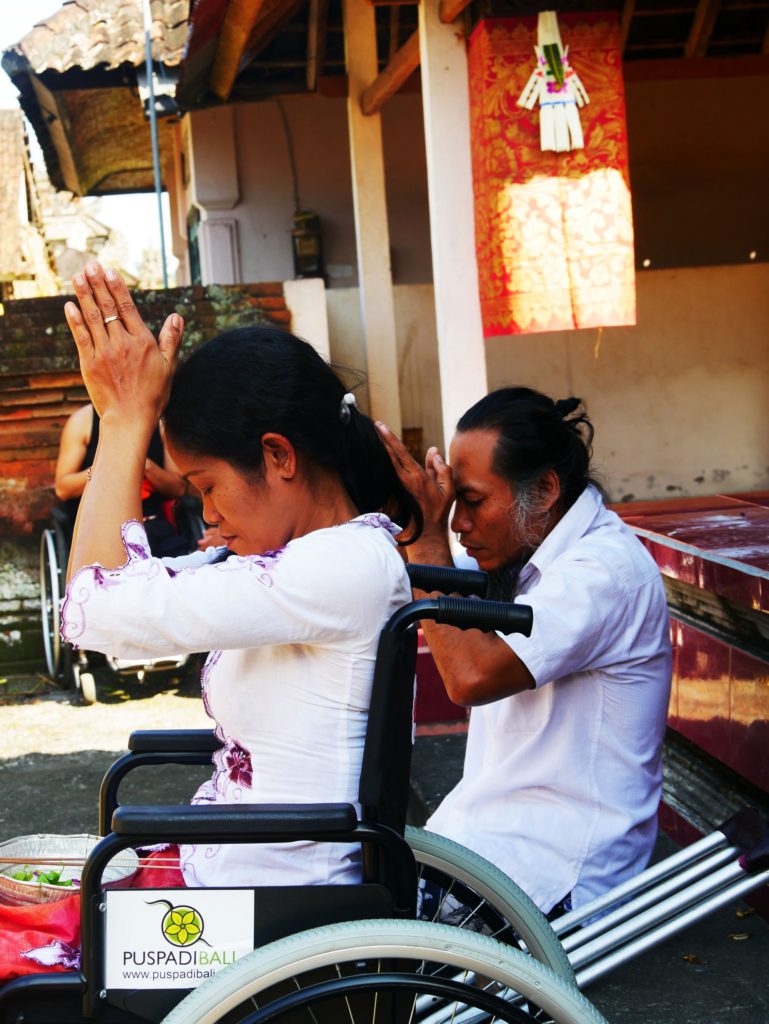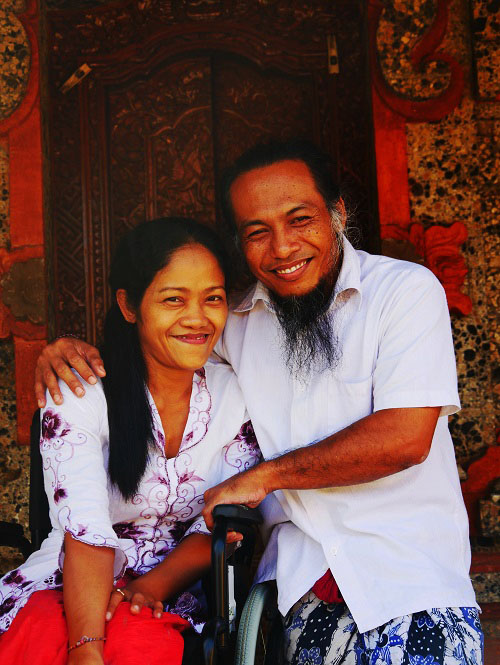
Reni is swiftly and easily moving around in her new wheelchair, as she sweeps the fallen leaves and chats with her family outside their traditional Balinese home and temple in Abiansemal in the Badung regency.
It’s Reni’s third and most comfortable wheelchair in the past 2 ½ years, after enduring big, second-hand and ill-fitting ones, while a caster quickly broke quickly on another one.
“This is my very first own wheelchair, made for me – I can do almost everything I want for it and it makes my life easy,” she says. “I am very happy to be in this study so I can help others get the right wheelchair.”
Reni’s new wheelchair was given to her as part of UCP Wheels for Humanity’s world-first Wheelchair User’s Voice Pilot Study (launched by UCP Wheels for Humanity and through a one-million funding grant from Google.org).

She’s one of 150 wheelchair users in Bali involved in the current research over the past three months, allowing a sensor to be attached to her wheelchair so it can collect data on how she is using it (in terms of durability, distance traveled and other factors).
SMS surveys are being sent out to the wheelchair user participants to learn more about their satisfaction as well as the impacts on education, income, community participation and health.
A properly-fitted wheelchair gives Reni access to the world where she gains much joy and contentment.
Never far from her, is her husband, Geste, who has cerebral palsy and uses a crutch to move about his home.
He works as a Hindu healer and a massage therapist.

Ten years ago, they met at a disability support NGO, the Yayasan Senang Hati Foundation, where they fell in love.
Since then, they’ve been a great source of strength for each other.
Through the use of a comfortable wheelchair, Reni loves her independence and supports her husband by travelling to the market each day to buy fresh food and cook meals for him.
Before a wheelchair, Reni used a crutch or moved about on her hands or crawling.
Without a properly fitting wheelchair, Reni’s movements, even around her home, would be extremely limited.
It would greatly impact on her quality of life, social connectedness and outlook.

UCP Wheels for Humanity is collecting data on wheelchair usage in developing countries to ensure everyone has access to the chair that best suits their individual needs.
Currently, there’s no quality data on wheelchair usage and performance in developing countries.
As a result, it leads to an increasing problem of donors, aid agencies and governments providing wrong-sized or ill-fitting wheelchairs to people with disabilities in developing countries.
However, the results from the Wheelchair User’s Voice Pilot Study and subsequent full study (starting in January), will provide crucial data on the best chair to maximize a person with a disability’s health and independence.
For Pariawan, he describes his wheelchair, “as his leg and without it, he can’t move around.”

Each day, Pariawan either repairs shoes or carves wooden pinochios, masks or bird cages (by order). He can make 10 Pinocchio figurines in 10 days to sell throughout his community.
He sits on the floor of his work space as he meticulously carves each wooden object and uses his wheelchair to move between each room in his home.
When Pariawan wants to make an offering, he uses an accessible ramp to lead him into the family’s temple.

Throughout the day, he heads outside to buy food from nearby warungs down the road in his village.
A motorbike specially fitted for Pariawan enables him to take his son to school.
“The wheelchair gives me mobility and without it, I can only go inside the room and can’t go anywhere and would be stuck inside my house,” he says.
One of the main reasons behind this kind of research is to place choice back where it belongs – in the hands of people with a disability.
It’s so they aren’t dictated by other people or organisations making important personal decisions for them or about the mobility aids they use.
It puts people with a disability’s voice at the forefront of policy and philanthropy decisions. The way it always should be.
